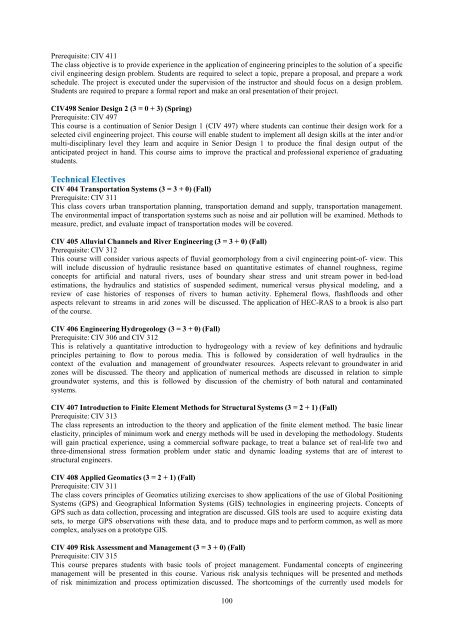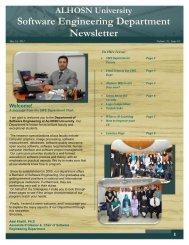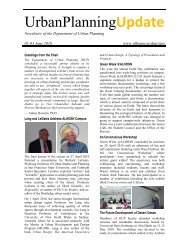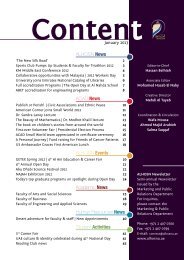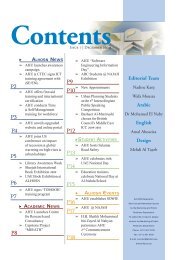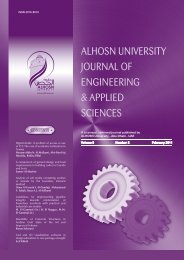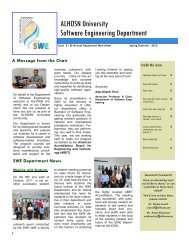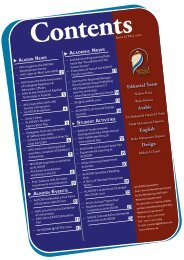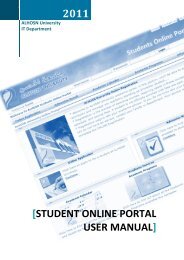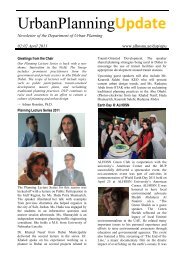ALHOSN University Catalogue Global Knowledge with Local Vision ...
ALHOSN University Catalogue Global Knowledge with Local Vision ...
ALHOSN University Catalogue Global Knowledge with Local Vision ...
You also want an ePaper? Increase the reach of your titles
YUMPU automatically turns print PDFs into web optimized ePapers that Google loves.
Prerequisite: CIV 411<br />
The class objective is to provide experience in the application of engineering principles to the solution of a specific<br />
civil engineering design problem. Students are required to select a topic, prepare a proposal, and prepare a work<br />
schedule. The project is executed under the supervision of the instructor and should focus on a design problem.<br />
Students are required to prepare a formal report and make an oral presentation of their project.<br />
CIV498 Senior Design 2 (3 = 0 + 3) (Spring)<br />
Prerequisite: CIV 497<br />
This course is a continuation of Senior Design 1 (CIV 497) where students can continue their design work for a<br />
selected civil engineering project. This course will enable student to implement all design skills at the inter and/or<br />
multi-disciplinary level they learn and acquire in Senior Design 1 to produce the final design output of the<br />
anticipated project in hand. This course aims to improve the practical and professional experience of graduating<br />
students.<br />
Technical Electives<br />
CIV 404 Transportation Systems (3 = 3 + 0) (Fall)<br />
Prerequisite: CIV 311<br />
This class covers urban transportation planning, transportation demand and supply, transportation management.<br />
The environmental impact of transportation systems such as noise and air pollution will be examined. Methods to<br />
measure, predict, and evaluate impact of transportation modes will be covered.<br />
CIV 405 Alluvial Channels and River Engineering (3 = 3 + 0) (Fall)<br />
Prerequisite: CIV 312<br />
This course will consider various aspects of fluvial geomorphology from a civil engineering point-of- view. This<br />
will include discussion of hydraulic resistance based on quantitative estimates of channel roughness, regime<br />
concepts for artificial and natural rivers, uses of boundary shear stress and unit stream power in bed-load<br />
estimations, the hydraulics and statistics of suspended sediment, numerical versus physical modeling, and a<br />
review of case histories of responses of rivers to human activity. Ephemeral flows, flashfloods and other<br />
aspects relevant to streams in arid zones will be discussed. The application of HEC-RAS to a brook is also part<br />
of the course.<br />
CIV 406 Engineering Hydrogeology (3 = 3 + 0) (Fall)<br />
Prerequisite: CIV 306 and CIV 312<br />
This is relatively a quantitative introduction to hydrogeology <strong>with</strong> a review of key definitions and hydraulic<br />
principles pertaining to flow to porous media. This is followed by consideration of well hydraulics in the<br />
context of the evaluation and management of groundwater resources. Aspects relevant to groundwater in arid<br />
zones will be discussed. The theory and application of numerical methods are discussed in relation to simple<br />
groundwater systems, and this is followed by discussion of the chemistry of both natural and contaminated<br />
systems.<br />
CIV 407 Introduction to Finite Element Methods for Structural Systems (3 = 2 + 1) (Fall)<br />
Prerequisite: CIV 313<br />
The class represents an introduction to the theory and application of the finite element method. The basic linear<br />
elasticity, principles of minimum work and energy methods will be used in developing the methodology. Students<br />
will gain practical experience, using a commercial software package, to treat a balance set of real-life two and<br />
three-dimensional stress formation problem under static and dynamic loading systems that are of interest to<br />
structural engineers.<br />
CIV 408 Applied Geomatics (3 = 2 + 1) (Fall)<br />
Prerequisite: CIV 311<br />
The class covers principles of Geomatics utilizing exercises to show applications of the use of <strong>Global</strong> Positioning<br />
Systems (GPS) and Geographical Information Systems (GIS) technologies in engineering projects. Concepts of<br />
GPS such as data collection, processing and integration are discussed. GIS tools are used to acquire existing data<br />
sets, to merge GPS observations <strong>with</strong> these data, and to produce maps and to perform common, as well as more<br />
complex, analyses on a prototype GIS.<br />
CIV 409 Risk Assessment and Management (3 = 3 + 0) (Fall)<br />
Prerequisite: CIV 315<br />
This course prepares students <strong>with</strong> basic tools of project management. Fundamental concepts of engineering<br />
management will be presented in this course. Various risk analysis techniques will be presented and methods<br />
of risk minimization and process optimization discussed. The shortcomings of the currently used models for<br />
100


